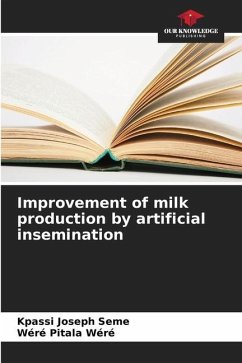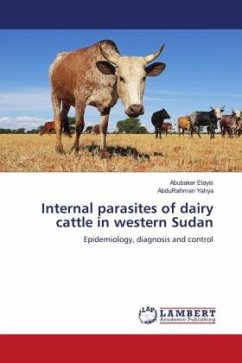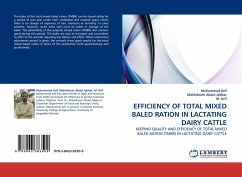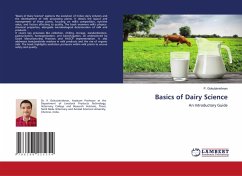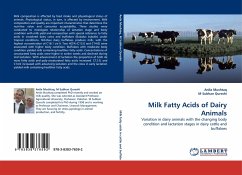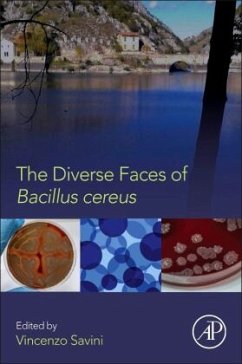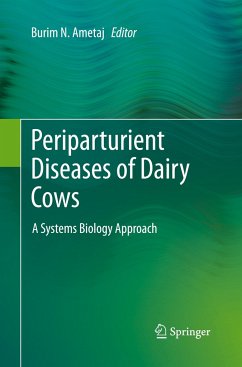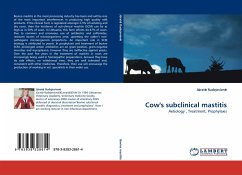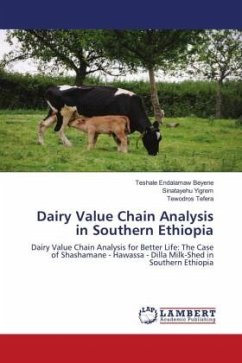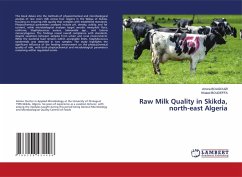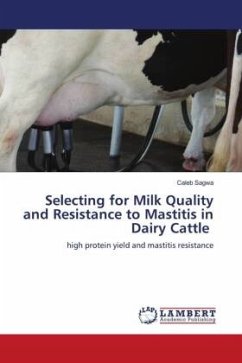
Selecting for Milk Quality and Resistance to Mastitis in Dairy Cattle
high protein yield and mastitis resistance
Versandkostenfrei!
Versandfertig in 6-10 Tagen
29,99 €
inkl. MwSt.

PAYBACK Punkte
15 °P sammeln!
The objective of this study was to optimize breeding systems that incorporate reproductive technologies and milk quality traits in the dairy cattle breeding programme. Specifically, it compared response to selection realized in a closed two-tier nucleus breeding system utilizing different reproductive technologies. Secondly it estimated economic values for milk protein yield and mastitis resistance and finally compared response to selection realized in a closed two-tier nucleus breeding system utilizing the current and alternative breeding goal accounting for protein yield and mastitis resista...
The objective of this study was to optimize breeding systems that incorporate reproductive technologies and milk quality traits in the dairy cattle breeding programme. Specifically, it compared response to selection realized in a closed two-tier nucleus breeding system utilizing different reproductive technologies. Secondly it estimated economic values for milk protein yield and mastitis resistance and finally compared response to selection realized in a closed two-tier nucleus breeding system utilizing the current and alternative breeding goal accounting for protein yield and mastitis resistance in dairy cattle in Kenya. The current breeding goal which does not account for milk quality traits was considered as base scenario. Computer simulation programme ZPLAN was used to model and evaluate response to selection. Economic values for milk protein yield and mastitis resistance were estimated using bio-economic model and selection index methodology, respectively. Four strategies considered were multiple ovulation and embryo transfer using conventional semen (MOET-CS) and X-sorted semen (MOET-XS) and Artificial Insemination using conventional semen (AI-CS) and X-sorted semen (AI-XS).



